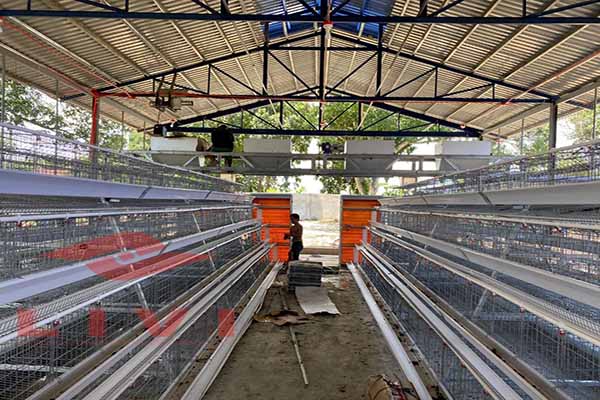Poultry Ventilation System for 200,000 Chickens in Togo: A Comprehensive Guide
The poultry industry in Togo is rapidly growing, and with the increasing number of chickens being raised, the need for efficient ventilation systems has become crucial. In this article, we will delve into the design and implementation of a poultry ventilation system for a farm housing 200,000 chickens. As a leading supplier of poultry equipment, Livi Machinery is well-equipped to provide solutions for such large-scale operations.
Understanding the Ventilation Needs
A proper ventilation system is essential for maintaining optimal conditions within a poultry house. It ensures that the air quality is high, temperature is regulated, and humidity is controlled. For a farm with 200,000 chickens, the following aspects should be considered:
1. Airflow Rate: The system must provide sufficient airflow to ensure that each chicken receives an adequate supply of fresh air.
2. Temperature Control: The system should be able to maintain a constant temperature, which is crucial for the health and growth of the chickens.
3. Humidity Control: Excessive humidity can lead to disease, while low humidity can cause stress. The system should balance humidity levels effectively.
4. Air Quality: The system must filter out dust, ammonia, and other harmful particles to maintain clean air.
Designing the Ventilation System
The design of a ventilation system for 200,000 chickens involves several key components:
1. Fans: High-capacity fans are required to move large volumes of air. These fans should be strategically placed to ensure even distribution of air throughout the house.
2. Ventilation Shafts: These shafts allow for the exchange of air between the inside and outside of the poultry house.
3. Air Filters: To maintain air quality, filters should be installed to remove dust and other particles.
4. Control Panels: Automation is key to managing the ventilation system efficiently. Control panels allow for adjustments to airflow, temperature, and humidity based on real-time data.
Implementing the System
Once the design is finalized, the implementation process involves:
1. Installation: Professional installation of fans, shafts, filters, and control panels is crucial for the system to function correctly.
2. Testing: After installation, the system should be thoroughly tested to ensure it meets the required specifications.
3. Maintenance: Regular maintenance is essential to keep the system running smoothly and efficiently.
Benefits of an Efficient Ventilation System
An efficient poultry ventilation system offers several benefits:
1. Healthier Chickens: Improved air quality and controlled environmental conditions lead to healthier chickens with lower disease rates.
2. Increased Productivity: By providing optimal conditions, chickens can grow faster and reach market weight sooner.
3. Cost Savings: Efficient ventilation can reduce energy consumption and lower operational costs.
Livi Machinery: Your Partner in Poultry Equipment
At Livi Machinery, we specialize in providing high-quality poultry equipment and services. Our team of experts can design, install, and maintain a ventilation system tailored to your specific needs. Whether you are a small-scale farmer or a large-scale poultry producer, we have the solutions to help you achieve success.
Contact us today to discuss your ventilation needs and learn how Livi Machinery can assist you in creating a more efficient and profitable poultry operation.

